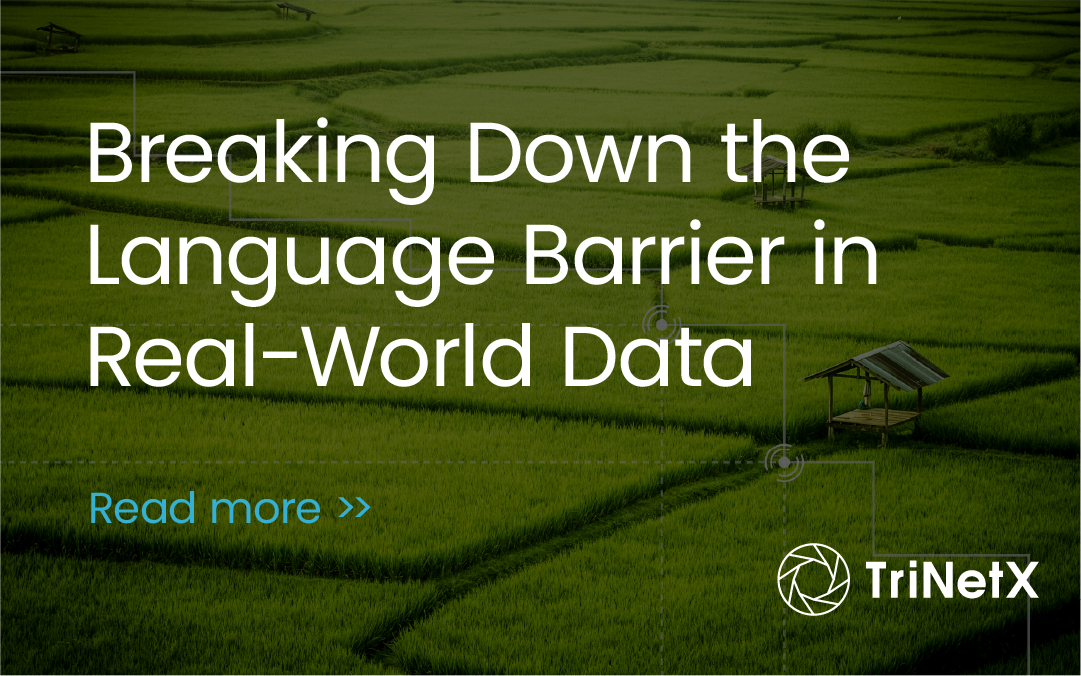Access to real-world data (RWD) is no longer the challenge; our ability to interact with it is. The barrier lies in the friction between researchers and the systems designed to unlock RWD’s potential. Unless we remove that friction, the promise of faster, smarter, more representative trials will remain out of reach.
The Hidden Friction Slowing Clinical Research
Every day, researchers and clinical operations teams wrestle with coding disease definitions, interpreting clinical criteria, and navigating complex interfaces with steep learning curves. Even a simple query like identifying patients hospitalized for heart failure in the past year can require expertise in medical coding systems, SQL/programming languages, or literature review and interpretation.
We already have unprecedented access to claims data and electronic health records organized into standard terminologies and coding systems such as ICD, CPT®, LOINC, RxNorm, and SNOMED. The data exists. But learning these systems is like mastering a new language. And just when you achieve fluency, the language changes.
Fluency also varies widely across the industry. Some researchers can define a disease across every coding system with ease; others are strong in SNOMED but struggle with labs or procedures. The result? Incomplete patient populations, inaccurate results, and research that falls short, not because of flawed methodology, but because of gaps in coding expertise.
What If We Had a Translation App for RWD?
Think of traveling in a country where you don’t speak the language. A translation app eliminates the barrier instantly. Now imagine that same experience for RWD.
At TriNetX, we’ve built solutions that democratize access to RWD, replacing lists of ICD codes with plain-English queries. Instead of navigating complicated dashboards, a researcher can simply ask: “Show me patients hospitalized for COPD in the past year.”
This shift is transformative. Researchers no longer need to be coding experts or data scientists to explore patient populations. They can focus on what matters most: designing smarter trials, running feasibility analyses, and improving overall trial efficiency and cost.
The three pillars driving this shift are:
- Removing Coding Expertise Requirements. AI translation from natural language to clinical concepts means researchers can focus on asking the right questions, not mastering coding systems.
- Eliminating UI Learning Curves. A conversational interface replaces complex dashboards. In an era of tool fatigue, simplicity is no longer optional; it’s essential.
- Taking Guesswork Out of Interpretation. Instead of hours to weeks in interpreting graphs and spreadsheets, AI surfaces insights directly in plain language.
TriNetX Case Study: Rethinking Trial Design
One example I shared at SCOPE Europe involved COPD trial design. A traditional query identified 230,750 eligible patients. By optimizing rigid criteria into translatable terms, TriNetX expanded that pool to 666,200, an increase of 189%.
- Dropping an arbitrary three-year diagnosis limit surfaced tens of thousands more patients.
- Targeting only recent triple therapy use (instead of lifetime exclusion) grew the pool by 40%.
- Narrowing exclusions to COPD-related hospitalizations increased it by 53%.
These optimizations don’t just improve enrollment. They reduce screen failures, lower trial costs, and accelerate timelines all while maintaining scientific rigor.
Why This Matters Now
The industry is at an inflection point. RWD will soon be used by exponentially more people, but only if access is frictionless.
Look at ChatGPT. It exploded because there was nothing to learn. You just type and get answers. Creating that same seamless experience for RWD and embedding it directly into workflows will drive adoption.
Consistency also matters. Every researcher defines things differently, which creates problems for reproducibility, meta-analyses, and the integrity of knowledge itself. The TriNetX approach to AI introduces clarity and reliability. Researchers still apply their own ideas, but with better execution, faster results, and transparent methods that make replication easier.
Toward a Universal Translation for RWD
The future of clinical research depends on making RWD universally accessible. Technical barriers and fragmented expertise should not hold us back. Whether you’re designing a trial, running a feasibility assessment, or identifying sites with high concentrations of eligible patients, you should be able to query and interpret RWD as easily as running a search online.
That’s the vision: a universal translation for RWD. No coding. No specialized training. No guesswork. Just straightforward, actionable insights for every stakeholder in clinical research.
Looking for a Deeper Dive?
In our webinar, “Democratizing Access to Real-World Data Through AI,” my TriNetX colleague Steve Kundrot and I share live examples, lessons learned, and how this technology is already transforming trial design and execution.
About Justin North
Over the last decade, Justin has led dozens of software solutions from idea to commercial release with companies including Phillips Healthcare, goBalto, and Oracle. He brings a deep background in data science and clinical research to his role as Director of Product Management at TriNetX, where he has overseen the development of products for trial design and feasibility.

